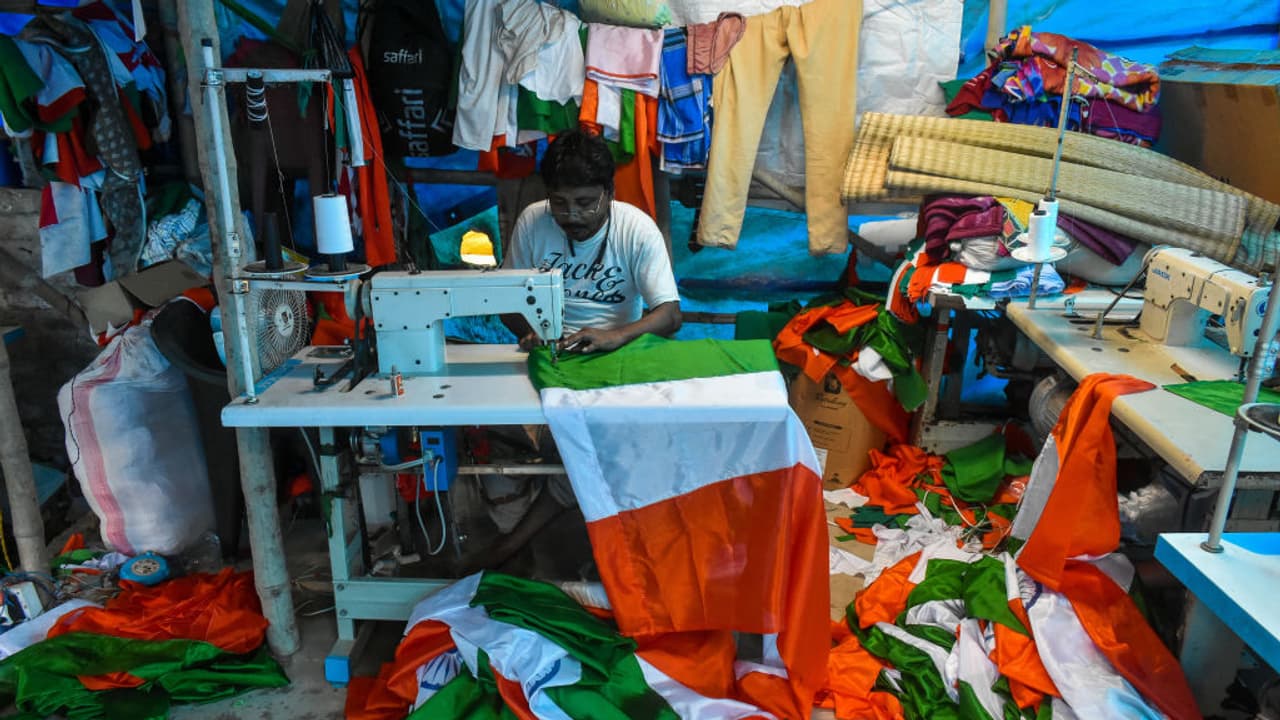Karnataka Khadi Gramodyoga Samyukta Sangha (KKGSS) — the one and only unit in India officially licensed by the Bureau of Indian Standards (BIS) to craft the Indian tricolour.
In the lanes of Bengeri village near Hubballi, Karnataka, a rhythmic symphony of looms and spinning wheels echoes through a sunlit khadi workshop. But this isn’t just any fabric factory — it’s the birthplace of the Indian national flag. Here, tradition meets patriotism, and every thread carries the weight of a billion hopes.
Karnataka Khadi Gramodyoga Samyukta Sangha (KKGSS) — the one and only unit in India officially licensed by the Bureau of Indian Standards (BIS) to craft the Indian tricolour. From towering flagpoles on government buildings to the shoulders of champions and heroes, every official flag unfurled across the country originates from this humble workshop where nationalism is not just stitched, but soulfully sewn into the fabric.
The genesis of KKGSS dates back to 1957, a post-independence era brimming with idealism. Visionary freedom fighter Venkatesh Magadi, alongside a group of like-minded patriots, sought to preserve the ethos of khadi — Mahatma Gandhi’s symbol of self-reliance — while creating meaningful livelihoods for rural youth.
That quiet dream took on national significance in 2004, when the Sangha undertook the solemn duty of manufacturing the Indian flag. By 2006, it stood as the only BIS-certified institution in the country entrusted with this honour. Since then, every single national flag hoisted officially has been born in this workshop.
The Journey: From Cotton to Tricolour
The odyssey of each flag begins in Tulasigeri village, nestled in Karnataka’s Bagalkot district. Here, artisans spin and weave pure cotton khadi by hand — no shortcuts, no machines — preserving the purity of the process.
The handwoven cloth then arrives at the KKGSS unit in Bengeri, where it undergoes a meticulous, all-manual transformation. The fabric is dyed into the three sacred hues — saffron for courage, white for peace, green for faith. The Ashoka Chakra, with its 24 carefully measured spokes, is hand-printed on both sides of the white panel.
Stitching these panels into one seamless tricolour is no ordinary task — it’s an art form requiring precision and passion. Once stitched, each flag is ironed, scrutinized for perfection, and packed for its patriotic journey. Alongside flags, KKGSS also produces a range of khadi items — from garments and carpets to honey, soaps, and handmade paper.
Scroll to load tweet…
Perfection Isn’t a Goal — It’s a Duty At KKGSS, flag-making is not merely a craft — it’s a sacred responsibility. Every flag is subject to exacting standards as per the Flag Code of India and BIS guidelines. From the thread count to the shade of saffron, from the Ashoka Chakra’s proportions to seam stitching techniques — every millimetre matters.
“If even a single measurement deviates, the flag is instantly rejected.” That’s not just quality control — it’s a solemn commitment to uphold the dignity of a symbol that commands national reverence. The flags are made in nine standardized sizes — from petite handheld versions to colossal banners meant for monumental hoisting. Any deviation is not just an error — it’s illegal.
Women Behind the Weave
Driving this legacy forward are the skilled hands of women artisans. Nearly all the stitchers at KKGSS — about 25 in number — are women, and their contribution is the silent power behind the fluttering tricolour.
“We may never leave this town, but our Tricolour is fluttering high around the world,” Annapoorna Kote, a supervisor, told Swarajya magazine. In their diligence lies a unique pride — of being the unseen force behind a symbol the entire nation salutes.
Over the past 13 years, KKGSS has manufactured over 3 crore national flags, supplying them to state governments, educational institutions, embassies, and the armed forces. Whether it flutters over the Red Fort, adorns international embassies, or respectfully covers the coffin of a martyr — each flag carries the spirit of Bengeri and the legacy of khadi.
